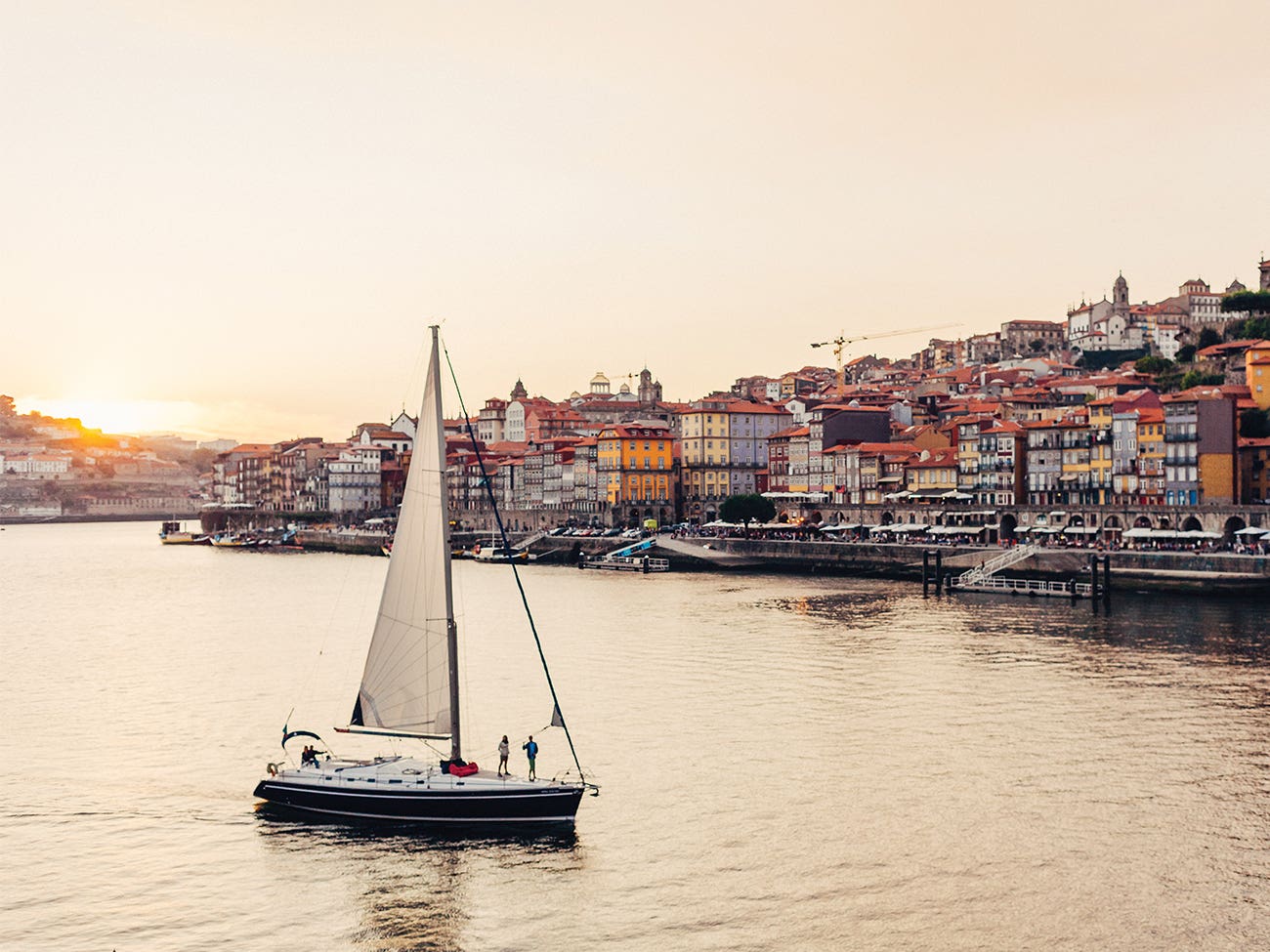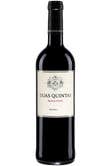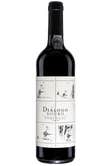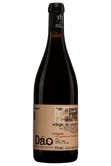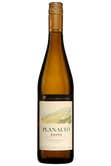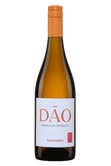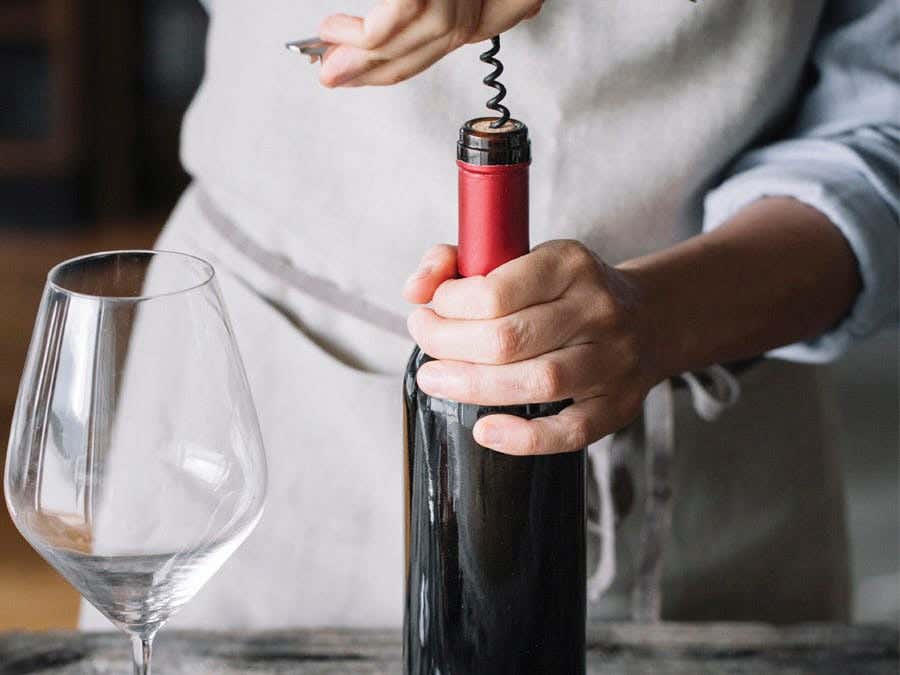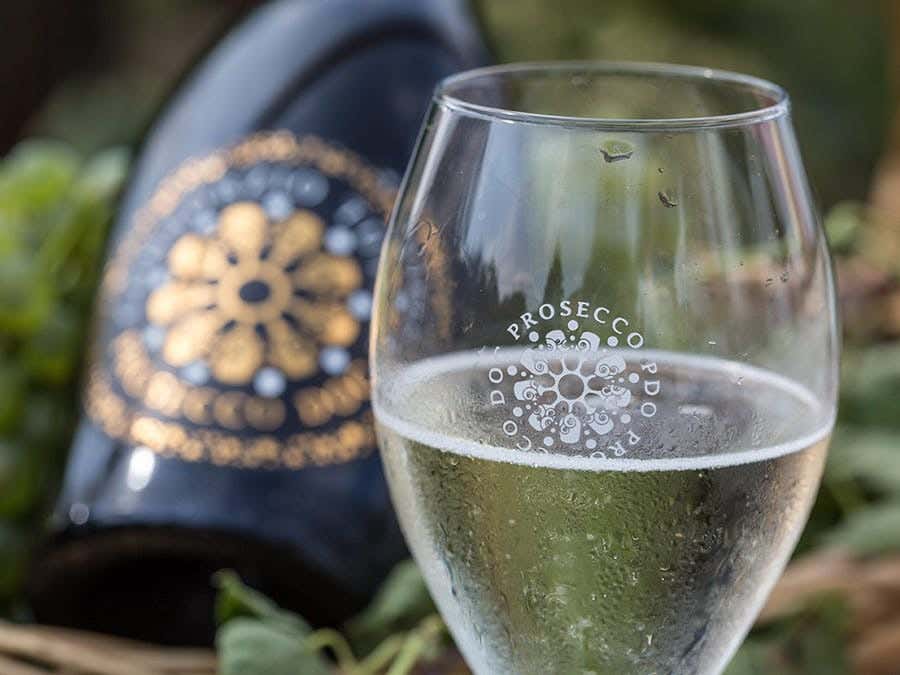Travelling in Portugal, you had better bring a strong pair of legs and well-attached jaws. Your strong legs are for scaling the sloping streets of Porto or Lisbon, the steep hills of the Douro and Alentejo valleys, or the heights of the Algarve and the volcanic cliffs of the island of Madeira. And your jaws need to be well attached so they won’t drop too far at the sight of, well, jaw-dropping panoramas.
Intrepid wine growers
The most spectacular Portuguese landscapes are those encompassed by vineyards. The Douro Valley, for example, is a place where centuries-old stony vine terraces carved into steep mountainsides are a testament to the undaunted spirit of early wine growers. It was in the 18th century on this terrain, as rugged as it is magnificent, that port – the celebrated after-dinner wine – first saw the light of day, effectively making the area the world’s first regulated wine-growing region. Its finest vintages will age gracefully for decades.
For a long time, port and Madeira were the only Portuguese wines that had managed to make a reputation beyond Portugal. Today, however, the combination of unique grape varieties (arinto, baga, touriga nacional, trincadeira, tinta barroca, verdelho and many others), the wide range of wine styles and the attractive quality-price ratios all contribute to the remarkable worldwide success of Portuguese wines. The country is bubbling over with pride, personality and passion.
These recipes are created by chef Jonathan Lapierre-Réhayem
of the Institut de tourisme et d’hôtellerie du Québec (ITHQ) restaurant.
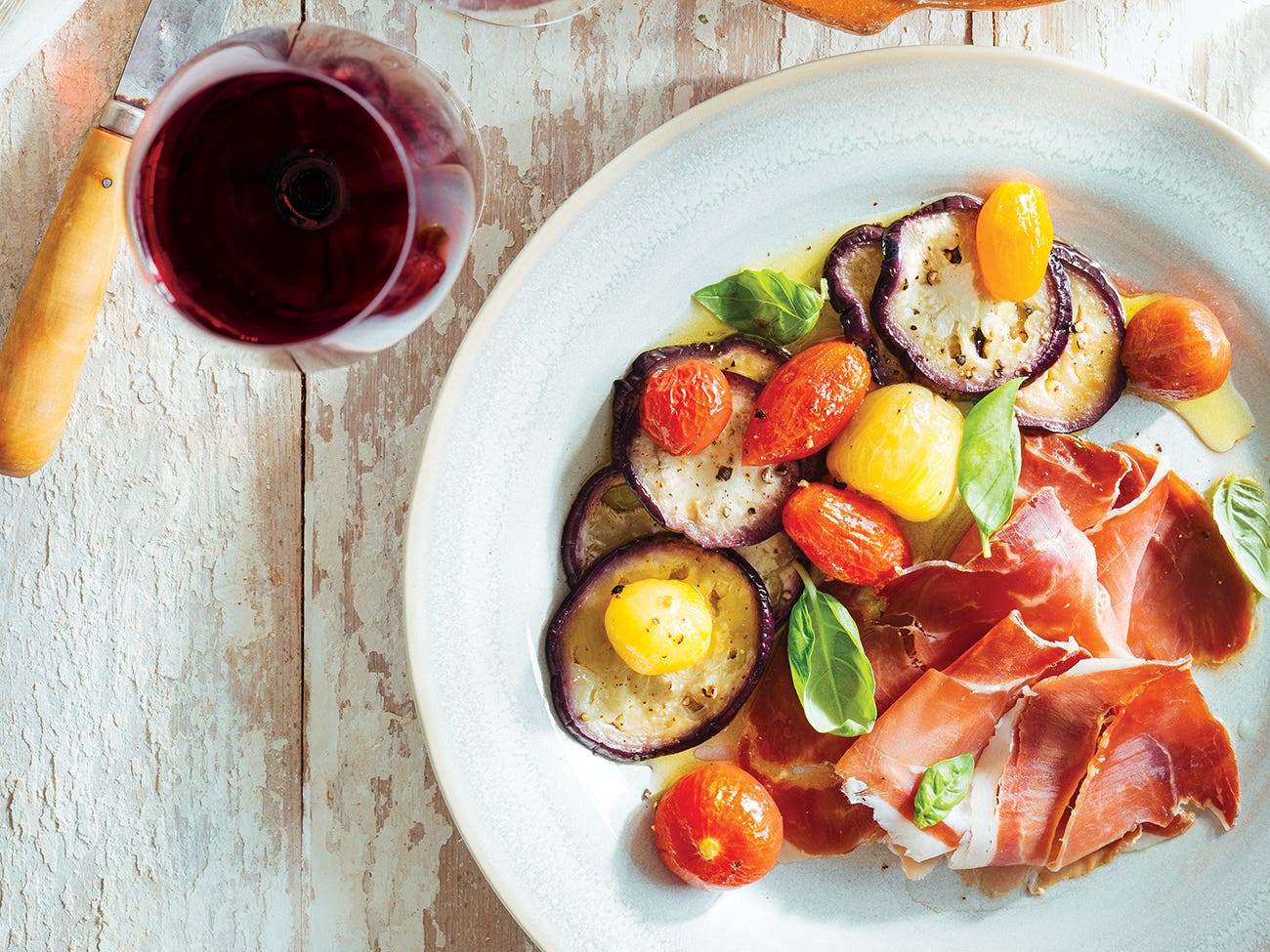

FATIAS DE FIAMBRE E BERINGELAS
(roasted eggplant with tomato confit and ham)
Preparation: 15 minutes
Cooking: 20 minutes
Cost per serving: $2.00
6 servings
Ingredients
2 large or 3 small eggplants
250 mL (1 cup) olive oil, plus 30 mL (2 tbsp)
40 mL (2 1/2 tbsp) sherry vinegar
15 cherry tomatoes
1 clove garlic
10 basil leaves
150 g (5 oz) thin slices prosciutto or Serrano ham
Salt and freshly ground pepper
Preparation
1. Preheat oven to 175°C (350°F). 2. Slice eggplants into 1/2-cm (1/4-in) rounds. 3. In an ovenproof pan, coat eggplant with 30 mL (2 tbsp) olive oil and 10 mL (2 tsp) sherry vinegar. Season with salt and pepper. 4. Roast for 3 to 5 minutes. 5. In another ovenproof pan, coat cherry tomatoes with 250 mL (1 cup) olive oil, remaining sherry vinegar and garlic. Bake in oven for 20 minutes. 6. Assemble salad by combining all prepared ingredients. Drizzle with tomato cooking juice. Adjust seasoning. 7. Top with prosciutto slices. Serve lukewarm.
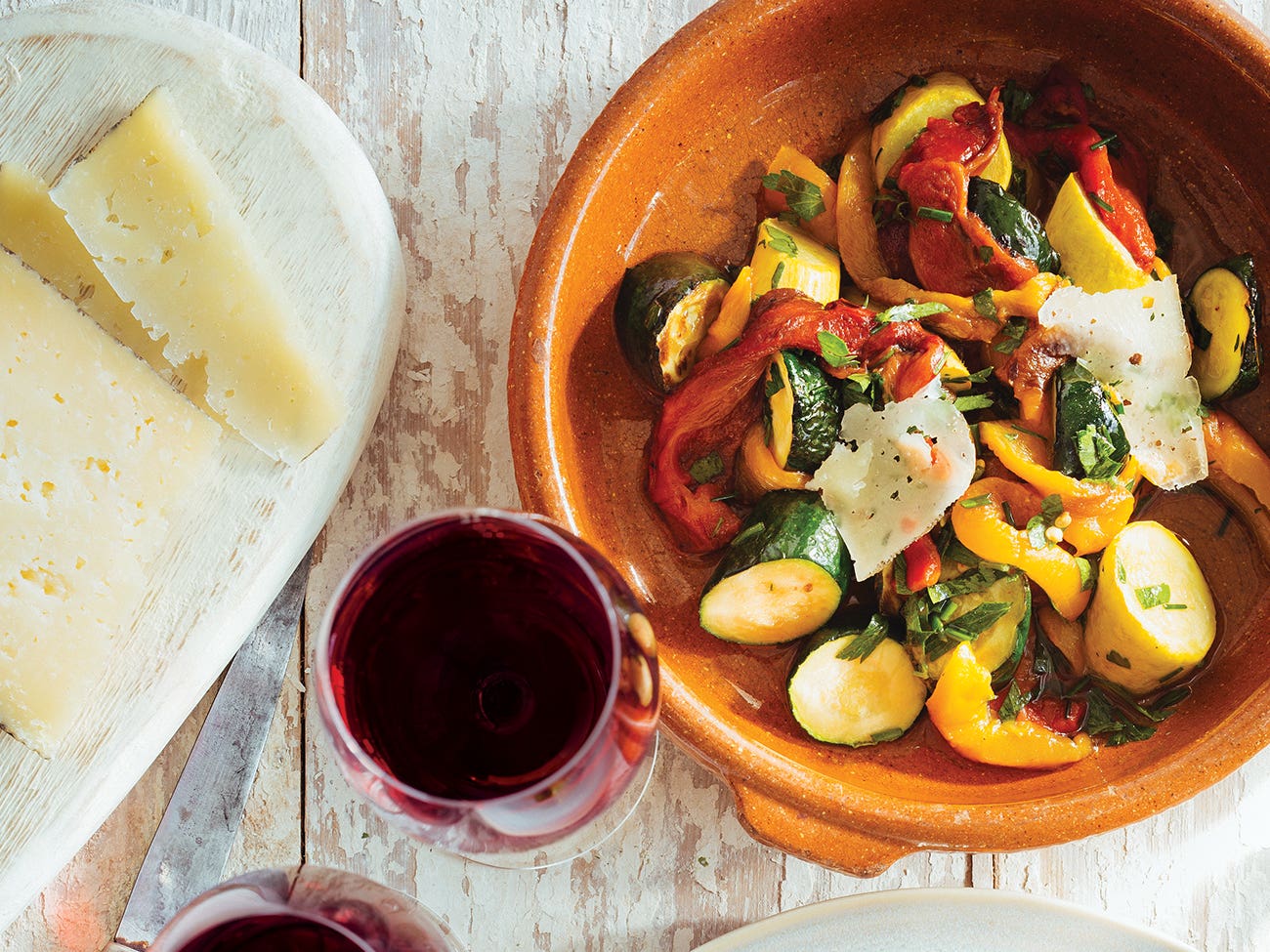

SALADA DE PIMENTÃOS E QUEIJO
(roasted peppers and zucchini with taliah cheese, herbs and country bread)
Preparation: 15 minutes
Cooking: 20 minutes
Cost per serving: $2.00
6 servings
Ingredients
2 red peppers
2 zucchinis
¼ cup of flat-leaf parsley, chopped
¼ tasse of chives, chopped
100 mL (1/3 cup) olive oil
30 mL (2 tbsp) sherry vinegar
100 g (4 oz) Taliah* or Manchego cheese, shredded
6 slices country bread
Salt and pepper
* Taliah is available in most cheese shops.
Preparation
1. Roast peppers on the barbecue or in the oven until the skin blisters and turns black. Let cool. Peel off and discard the blackened skin. Cut peppers into 1-cm (1/2-in) strips. 2. Cut zucchinis into slices on the diagonal, and roast for about 3 minutes. 3. In a bowl, mix chopped herbs, zucchini slices, pepper strips, olive oil, vinegar, salt and pepper. 4. Transfer the warm salad onto individual plates. Sprinkle shredded cheese on top, and serve with a slice of toasted bread.
What to drink with these tapas?
Characterized by the fact that they are not aged in oak barrels, Portugal wines with the Fruity and Medium-bodied taste tag are crisp and fruity, and boast a supple profile that makes them a great go-to option. Dry and fresh, they pair perfectly with charcuterie, vegetables, and cheese. Serve slightly chilled for an even more pleasurable tasting experience.
From north to south, the magic awaits
Over the past two decades and thanks to pioneers like renowned winemaker Dirk Niepoort, the Douro region has been producing table wines with vigour – both ready-to-drink cuvées and more complex, age-worthy reds and whites.
Vinho Verde wines have graduated from the usual dry, semi-sparkling whites to the more lingering cuvées with distinct personalities like those made from Alvarinho and Loureiro grapes. The Alentejo, Dão and Bairrada regions, too, offer a myriad of possibilities – from light to more ambitious and powerful wines – worlds away from the familiar choice between Cabernet and Chardonnay, a rare sight in any case.
Such remarkable diversity of wine is a prime asset when it comes to the task of pairing up with the rustic local cuisine, which features both Atlantic seafood and land-based produce. Increasingly, the Portuguese are keen to showcase the best of their culinary treasures.
Taste Porto Food Tours, for example, offers guided walking tours through the hilly streets of Porto (what better way to work up an appetite), with stops at the city’s bustling Bolhão food market as well as wine bars and other emporiums where you can sample traditional delicacies like pasteis (sweet or savoury pastries) and chouriço assado (spicy sausage flame-grilled right in front of you in a stoneware dish). Stop at Taberna do Largo, whose owners scour the country from one end to the other to bring back the finest cheeses, charcuteries and authentic recipes for their shop. Come evening, continue the theme with an
Stop at Taberna do Largo, whose owners scour the country from one end to the other to bring back the finest cheeses, charcuteries and authentic recipes for their shop. Come evening, continue the theme with an arroz de marisco, the Portuguese version of seafood paella, paired with any of the crisp and lively whites that the country seriously promotes.
Clinging picturesquely to the banks of the Douro, Porto displays a vitality and dynamism that has been growing for more than a decade now. It is a city of charm and delight, awaiting discovery.
Stress-free art of living
If you’re tempted by all this diversity, by the sea or the mountains, and decide to visit Portugal, keep in mind that this country approaches daily living in its own way and at its own pace – ditto in terms of food and drink. Famously friendly and hospitable, the Portuguese go out of their way to accommodate visitors. One example: If you eat out with your children in a restaurant, nobody will mind if the kids decide to wander about between tables. On the contrary, don’t be surprised if the owners or other guests take a shine to your children and offer them sweets or a dessert while your
Famously friendly and hospitable, the Portuguese go out of their way to accommodate visitors. One example: If you eat out with your children in a restaurant, nobody will mind if the kids decide to wander about between tables. On the contrary, don’t be surprised if the owners or other guests take a shine to your children and offer them sweets or a dessert while your wineglasses are being replenished. The word “stress” hardly exists in the Portuguese vocabulary.
Historic towns like Evora in the Alentejo, fully express the appeal of a country that is content to live life in its own inimitable way.
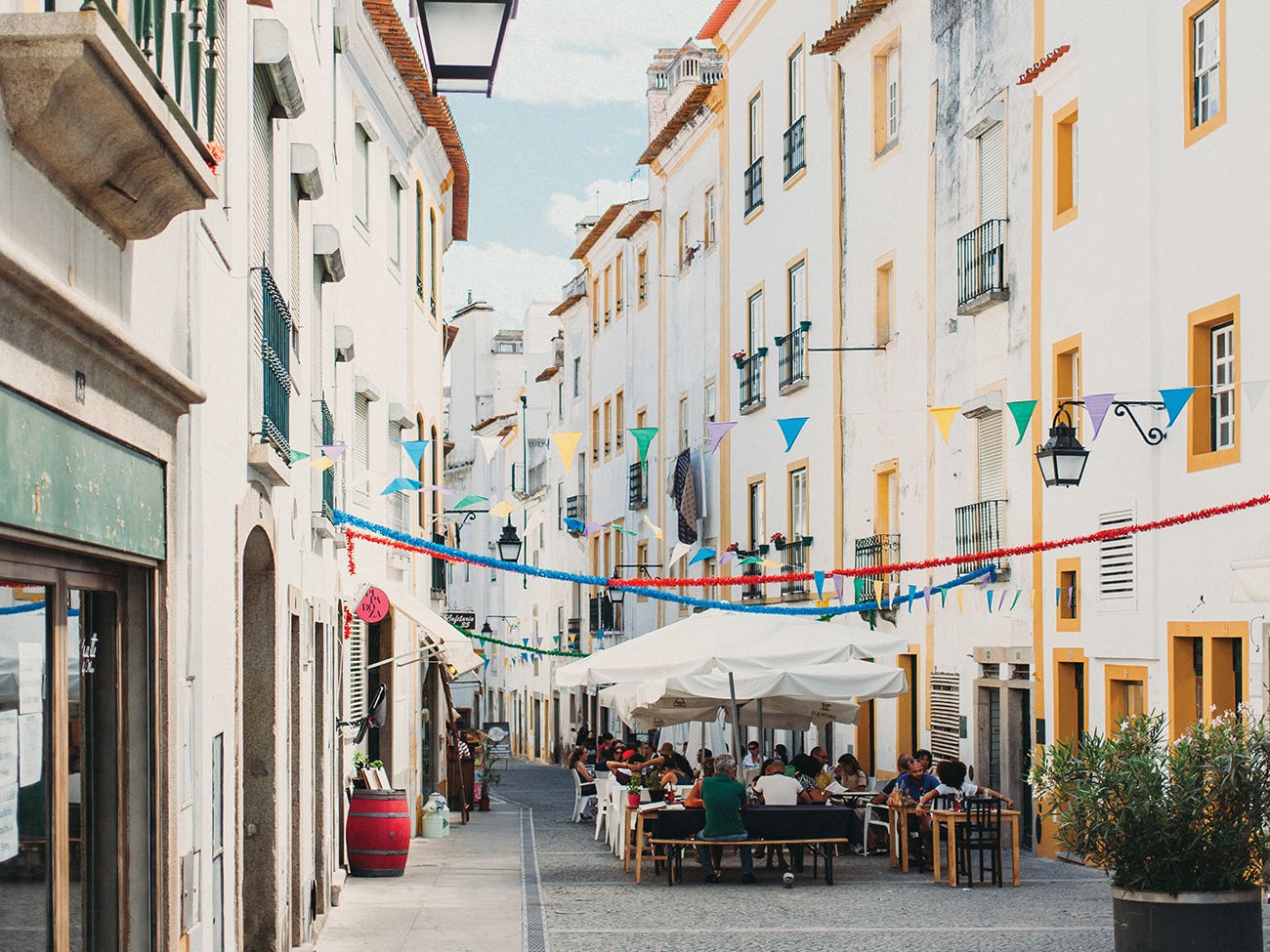

By the numbers
A wine exporter for centuries, Portugal is the 10th largest wine producer and 9th largest exporter, according to 2021 data. The Douro Valley, long celebrated for its port wine, is the country’s largest wine region, accounting for more than 20 percent of the national production, followed by the Lisbon, Alentejo, and Minho regions.
Porto and Madeira account for 25 percent of the export volume and 46 percent of the value.
TOP 3!
Inspire members’ favourite appellations since 2015: Douro, Dão, and Vinho Verde.
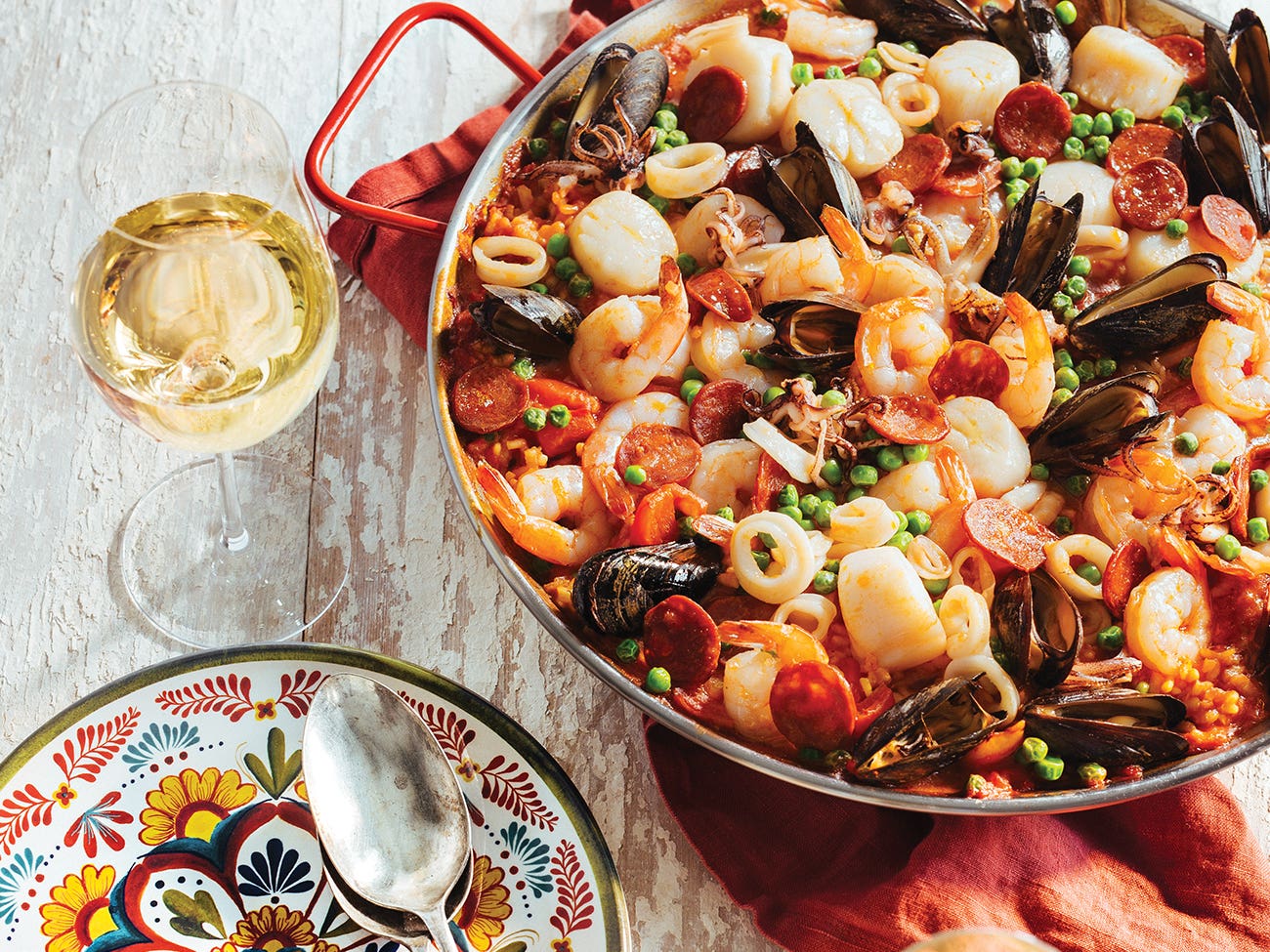

SEAFOOD PAELLA
Preparation: 30 to 35 minutes
Cooking: 40 minutes
Costt per serving: $11.50
4 servings
Ingredients
Tomato sauce:
60 mL (1/4 cup) olive oil
1 average-sized onion, coarsely chopped
2 cloves garlic, minced
1 pepper, diced
1 796-mL (28-oz) can diced tomatoes
15 mL (1 tbsp) tomato paste
Salt and freshly ground pepper
Paella:
24 shrimp (21/25 or 18/21 count), approximately 225 g (1/2 lb)
450 g (1 lb) calamari rings
12 large scallops
24 large mussels
225 g (1/2 lb) sliced chorizo
60 mL (1/4 cup) white wine
500 mL (2 cups) long-grain rice Generous pinch saffron threads
500 mL (2 cups) fish stock, clam juice or bouillon
125 mL (1/2 cup) frozen green peas
60 mL (1/4 cup) fresh minced parsley
Preparation
1. In a bowl, soak the saffron in the bouillon and set aside. 2. Preheat oven to 190°C (375°F). 3. Tomato sauce: In a large saucepan, heat 30 mL (2 tbsp) oil at medium. Stir in the onion, garlic and diced pepper. Sauté until soft. Add the tomatoes and tomato paste. Season with salt and pepper. Simmer for 20 minutes. Set aside. 4. In a skillet, heat the remaining oil and sauté the seafood (except the mussels) and chorizo. Deglaze with white wine and set aside. 5. In an ovenproof skillet, add the rice to the saffron bouillon and bring to a boil. 6. Incorporate tomato sauce. Transfer to the oven and cook for 20 to 25 minutes. 7. About 10 minutes before the end of cooking time, add the peas and the sautéed seafood and chorizo. Arrange the mussels over the rice. 8. Continue cooking in the oven until the mussels open. 9. At serving time, drizzle the paella with olive oil and sprinkle with parsley.
What to drink with this paella?
Whites with the Fruity and Vibrant taste tag are thirst quenching and versatile, and pair particularly well with our arroz de marisco (seafood rice), also known as paella in Spain. These fruity and floral wines will really elevate the flavours of the shellfish, seafood, and saffron rice.
Related Posts
-
Read more
SAQ shelves are lined with more than 150 wines and spirits produced abroad and bottled here, a process that has a positive impact on the environment and workforce in the province.
-
Read more
In recent years, Prosecco DOC (Denominazione Di Origine Controllata) sales have dizzying new heights. Read on to learn more about the accessible bubbles adored the world over.
-
Read more
Bubbly’s rising popularity has resulted in a wide variety of bottles to choose from. Here’s a handy guide to finding the one that’s right for you!
 Free in-store delivery with purchases of $75+ in an estimated 3 to 5 business days.
Free in-store delivery with purchases of $75+ in an estimated 3 to 5 business days.
